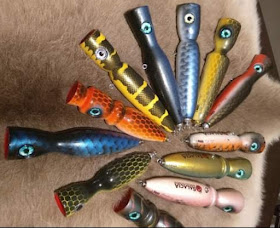Panggau Libau Lendat Dibiau Gerempong Isang,
Merawa Lama Munyi Merimba Mungga Nebang.
Welcome to Paradise!!
Saturday, July 30, 2011
Monday, June 13, 2011
Sape...instrument of the Gods of Borneo
- Sape is not even the original name it was called. It was firstly known as sampe' by the Lebu' Kulit Tribe among the Kenyah's race in Kalimantan ,Borneo .Who was the inventor of the instrument. Now people call it sape, sapeh and sampik , it all depend on the reporters spelling. Even so as the instrument being used by people of various ethnic, they have name for it according to their own tongue.
- Share
- Remove
- Flag for spam
- Block User
- Unblock User
- Who was this historical inventor? His name was called Anye' Selung. Again some writers spell his name as Nyik Selung and Anyik Selong. He was a limping man. He got a high fever for many days. On one particular day he got this strange encounter or rather a dream where he was instructed by spirits to invent the instrument. When he got up he was healed. He then shape this "Jelutung wood" and carved it according to what he was instructed. He used Pineapple leave threat as the strings.
Saturday, February 05, 2011
History of Tattooing
History of Tattooing Middle East -Egypt
A little known fact about the Egyptian Culture and Tattooing is that oddly enough that tattoos were worn by only the Egyptian females! Of course in the future, it may be possible that archaeologists may unearth new mummies with proof of tattooed male Egyptian mummies, but to date, the proof states that if you were a woman of Egypt thousands of years ago you and your female counter parts would be the only ones getting tattooed while the males just sat around and watched, perhaps in envy.
An Egyptian mummy known as "Amunet" was discovered in Thebes in 1891. Amunet (The Goddess of Love) was later to be found to be the remains of "The Priestess of Hathor, her time dates back to approximately 2200BC. Decorated with diamond shaped and elliptical dot patterns, groups of linear markings decorating her arms and thighs and a fairly large pattern with a mixture of dots and smaller lines resting below her navel area, this High Priestess and as well "dancer" may have been an inspiration to other dancers and performers of her area. Many other mummies were discovered to have basic renditions of the Goddess Amunet, tattooed upon their own bodies, along with similar linear and circular markings. Although there is no known word or glyph associated with tattooing in our current understanding of the Egyptian language, it must have been important to them as it is rumored that the Egyptians played a major role in the spreading the art of tattooing throughout the area and as well onto the world itself during the days of the Great Pyramid build. Many local and non local laborers and various artisans were traveling to Egypt to take their respective places in the audacious task of building the Pyramids.
:
Sunday, January 02, 2011
Punan
Punan Bah or Punan is an ethnic group found in Sarawak, Malaysia. They are distinct, unrelated to the Penan and also the other so called Punan found in Kalimantan the Indonesian part of Borneo. Their name stems from two rivers along the banks of which they have been living time immemorial. They do have other names - Mikuang Bungulan or Mikuang and Aveang Buan. But these terms are only used ritually these days.
The Punan (or Punan Bah) have never been nomad. In the old days they base their living on a mixed economy. Swidden agriculture with hill paddy as the main crop, supplemented by a range of tropical plants which include maniok, taro, sugar cane, tobacco, etc. Hunting especially wild boar, fishing, and gathering of forest resources are the other important factors in their economy.
However, in the late 1980s many Punan, notably the younger, more educated, gradually migrating to urban areas such as Bintulu, Sibu, Kuching and Kuala Lumpur in search of better living. However, they didn't abandon their longhouses altogether. Many would still return home - especially during major festivities such as Harvest Festival / or Bungan festival as it is known among Punan.
Punan is a stratified society of 'laja' (aristocrats), 'panyen' (commoners), and 'lipen' (slaves). This is a fact determine their historical traditions that have been preserved. Just like most of the history of European Middle Ages is linked to and mainly concerned the various ruling monarchs, so are the historical and mythical traditions of Punan closely connected to their rulings aristocrats.









